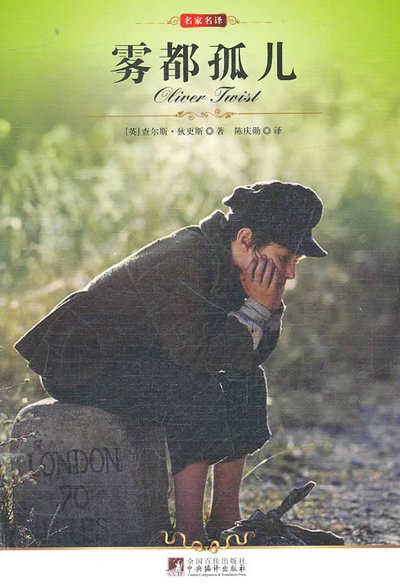After having sketched its moral face, it will not prove unprofitable to point out, in a few words, its material configuration. The reader already has some idea of it.
The convent of the Petit-Picpus-Sainte-Antoine filled almost the whole of the vast trapezium which resulted from the intersection of the Rue Polonceau, the Rue Droit-Mur, the Rue Petit-Picpus, and the unused lane, called Rue Aumarais on old plans. These four streets surrounded this trapezium like a moat. The convent was composed of several buildings and a garden. The principal building, taken in its entirety, was a juxtaposition of hybrid constructions which, viewed from a bird's-eye view, outlined, with considerable exactness, a gibbet laid flat on the ground. The main arm of the gibbet occupied the whole of the fragment of the Rue Droit-Mur comprised between the Rue Petit-Picpus and the Rue Polonceau; the lesser arm was a lofty, gray, severe grated facade which faced the Rue Petit-Picpus; the carriage entrance No. 62 marked its extremity. Towards the centre of this facade was a low, arched door, whitened with dust and ashes, where the spiders wove their webs, and which was open only for an hour or two on Sundays, and on rare occasions, when the coffin of a nun left the convent. This was the public entrance of the church. The elbow of the gibbet was a square hall which was used as the servants' hall, and which the nuns called the buttery. In the main arm were the cells of the mothers, the sisters, and the novices. In the lesser arm lay the kitchens, the refectory, backed up by the cloisters and the church. Between the door No. 62 and the corner of the closed lane Aumarais, was the school, which was not visible from without. The remainder of the trapezium formed the garden, which was much lower than the level of the Rue Polonceau, which caused the walls to be very much higher on the inside than on the outside. The garden, which was slightly arched, had in its centre, on the summit of a hillock, a fine pointed and conical fir-tree, whence ran, as from the peaked boss of a shield, four grand alleys, and, ranged by twos in between the branchings of these, eight small ones, so that, if the enclosure had been circular, the geometrical plan of the alleys would have resembled a cross superposed on a wheel. As the alleys all ended in the very irregular walls of the garden, they were of unequal length. They were bordered with currant bushes. At the bottom, an alley of tall poplars ran from the ruins of the old convent, which was at the angle of the Rue Droit-Mur to the house of the Little Convent, which was at the angle of the Aumarais lane. In front of the Little Convent was what was called the little garden. To this whole, let the reader add a courtyard, all sorts of varied angles formed by the interior buildings, prison walls, the long black line of roofs which bordered the other side of the Rue Polonceau for its sole perspective and neighborhood, and he will be able to form for himself a complete image of what the house of the Bernardines of the Petit-Picpus was forty years ago. This holy house had been built on the precise site of a famous tennis-ground of the fourteenth to the sixteenth century, which was called the "tennis-ground of the eleven thousand devils."
All these streets, moreover, were more ancient than Paris. These names, Droit-Mur and Aumarais, are very ancient; the streets which bear them are very much more ancient still. Aumarais Lane was called Maugout Lane; the Rue Droit-Mur was called the Rue des Eglantiers, for God opened flowers before man cut stones.
在初步描绘了那修院的精神面貌以后,再说几句话把它的物质外形描述一下也不会是无益的。读者在这方面也早已有个概念了。
小比克布斯圣安东尼修院几乎全部占用了那个广阔的不等边四边形,这是由波隆梭街、直壁街、比克布斯小街和那条已被堵塞而在老地图上则被称为奥玛莱街的死巷交叉形成的。那四条街俨如一道壕沟圈住那不等边四边形。那修院是由好几栋房屋和一个园子构成的。那栋主要的房屋,就它的整体说,是由几座风格不一致的建筑物凑合起来的,从空中望下去,那一连串建筑物就很象一把放在地上的曲尺。曲尺的长臂从比克布斯小街一直延伸到波隆梭街,占有整条直壁街的街边;短臂面临比克布斯小街,那一面的房屋高而灰暗,形象严肃,正面的门窗都装有铁栅栏,六十二号的大车门标志着那一带房屋的尽头。在那一带房屋的正中,有一道老式的矮圆拱门,门上处处是白灰土,门洞里布满了蜘蛛网,那道门只在星期日才开放一两个钟点,或在有修女的灵柩要抬出修院时才偶然开一次。那也就是公众进礼拜堂的地方。在曲尺转角的地方,有一间当作储藏室用的方厅,修女们却称它为“账房”。沿着长臂一带,是各级嬷嬷和初学生的静室所在地段。沿着短臂一带,有厨房、带走廊的食堂和礼拜堂。在六十二号大门和封闭了的奥玛莱巷巷口之间的是寄读学校,人们从外面看去,却看不见那学校。不等边四边形的其余部分便是园子,园子要比波隆梭街的街面低许多,因此围墙在园里一面和外面比起来要高些。园里的地面是微微隆起的,中间有个稍高部分,一株美丽的圆锥形的枞树耸立在那上面,宛如圆盾中心的突刺,四条宽道从那中心出发,伸向四方,每一条宽道又都有两条小路,各向左右分展出去,各各相通,因此那片园地,假使是圆的话,那些道路所构成的几何图形就象一个加在轮子上面的十字架。所有道路都抵达围墙,由于那园子的围墙很不规则,道路的长短也就不一致。道路两旁,都栽了醋栗树。在直壁街的角上有着老院的遗迹,有条小道,在两行高大的白桦下面,从那里伸向奥玛莱巷转角处的小院。小院的前面,有所谓小园。我们在这样一个整体中再加上一个天井,加上由内部各院房屋所形成的各种不同的弯角、监狱的围墙、一长列相距不远可以望见的沿着波隆梭街那一边的黑房顶,我们便能想象出四十五年前存在于小比克布斯的伯尔纳女修院的整个面貌了。从十四世纪到十六世纪,那里是个著名的球场,叫“一万一千个魔鬼的俱乐部”,这正是日后建造那圣洁的修院的基地。所有那些街道,对巴黎来说,都是最古老的。直壁、奥玛莱这类名称,已够古老的了,以这类名称命名的街道则更为古老。奥玛莱巷原称摩古巷,直壁街原称野蔷薇街,因为上帝使百花开放远在人类开凿石头以前。







